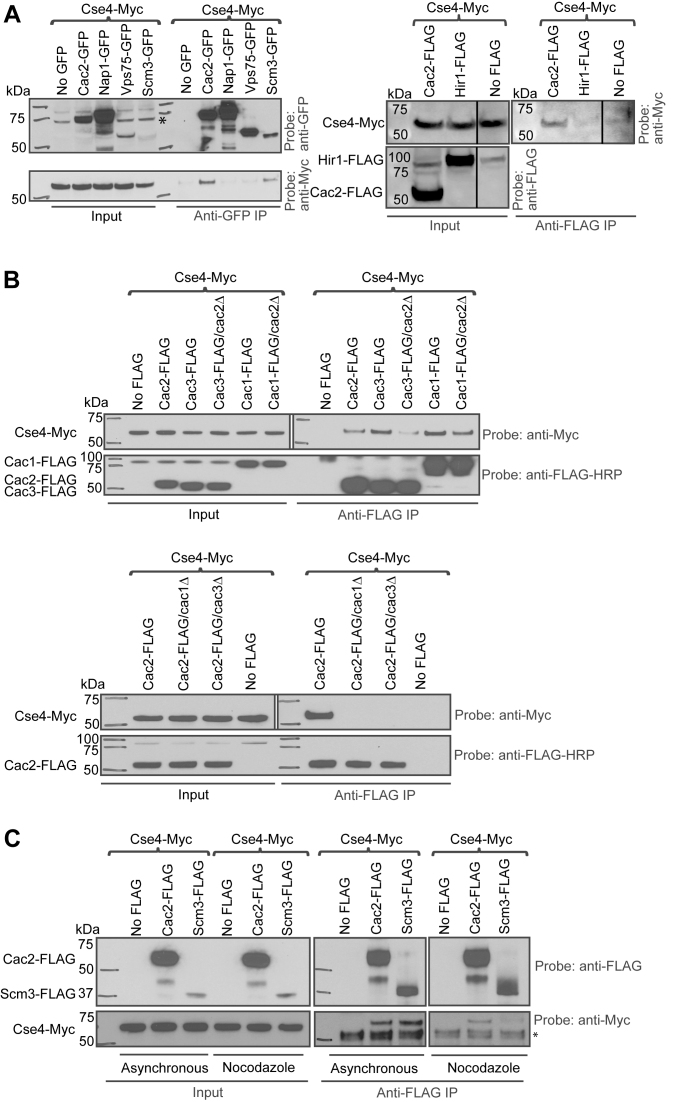Figure 1.
CAF-1 subunits interact with Cse4. Whole cell extracts were used to carry out co-IPs in (A–C). (A) Left panel: strains carrying GFP-tagged chaperones, Scm3, Vps75, Nap1 and Cac2 subunit of CAF-1 were used in co-IP. Only Cac2-GFP pulled down Cse4. A control IP was performed from a strain lacking the GFP tag. Scm3-GFP IP was the positive control. Right panel: affinity-tagged strains (Cse4-Myc/Cac2-FLAG and Cse4-Myc/Hir1-FLAG) were used for co-IP. A control IP was performed from a strain lacking the FLAG tag. In anti-FLAG co-IP, Hir1-FLAG did not pull down Cse4, only Cac2-FLAG pulled down Cse4-Myc. (B) Cac1 and Cac3 subunits of CAF-1 are required for interaction with Cse4. Upper panel: WT or cac2Δ strains carrying FLAG-tagged Cac1 or Cac3 were used for co-IP. A strain lacking the tag on Cac1 and Cac3 was used as the negative control. In anti-FLAG co-IP, both Cac1 and Cac3 pulled down noticeably more Cse4-Myc. These interactions became weaker with CAC2 deletion. Lower panel: WT, cac1Δ or cac3Δ strains carrying FLAG-tagged Cac2 were used in anti-FLAG co-IP. A strain lacking the tag was used as the control. Cac2/Cse4 interaction was completely abolished in cac1Δ or cac3Δ strains. (C) CAF-1 can interact with Cse4 outside of S phase. Affinity-tagged strains (Cse4-Myc/Cac2-FLAG and Cse4-Myc/Scm3-FLAG) were used in anti-FLAG co-IP using asynchronously grown cells and G2/M-arrested cells. A strain lacking the FLAG tag served as a negative control. Scm3 was used as a positive control. Cac2 interacted with Cse4 in both asynchronously grown cells as well as G2/M-arrested cells. A non-specific band is marked with an asterisk.

